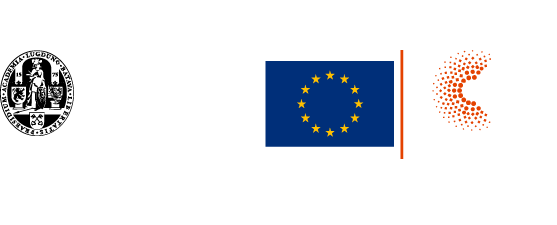
On July 7-8 Ruben van de Ven participated in the workshop Making is thinking:
design, craft, and the practice of IR organised by Anna Leander (Graduate Institute, Geneva) and Jonathan L. Austin (University of Copenhagen).
With contributions from Claudia Aradau, Tobias Blanke and Ibtehal Hussain; Anna Finiguerra; Callum Smith; Laura Sjoberg; Mark Lacy; Michelle D. Weitzel, Christine Sylvester; Victória Santos and Amaya Querejazu; Ildikó Plájás and Ruben van de Ven.
Workshop abstract
Can we practice the discipline of international relations differently? Beyond the privileging of the written word, logos, and episteme? Why do so few scholars of IR design and disseminate computer algorithms, architectural plans, audio-visual exhibitions, or other such fundamentally material and aesthetic objects? At one level, the answer to those questions if obvious. These things do not occur because we are not (for the most part) architects, computer scientists, or artists. The craft of IR is textual because our vocation is centred around the cerebral task of knowledge production, engaged with through a focus on conceptual sophistication, methodological experimentation, and external empirical inquiry (Sylvester 2013; Jahn 2016).
We ask these questions nonetheless under the intuition of Richard Sennett’s (2008) injunction that making is thinking. In this view, any act of creating an object produces different forms of knowledge as we are forced to negotiate with forms of matter that possess distinct possibilities, limits, affects, histories, and capacities (Haraway 1991; Austin and Leander 2021). In the act of writing a text one learns something. In the act of moulding a clay pot one learns something different. And in the act of coding a computer programme, something still different is learned. The question at the core of this EWIS workshop is thus whether or not the discipline of IR is unnecessarily limiting the scope of its knowledge production, as well as the politicality of that knowledge, by remaining almost exclusively within the realm of textual making (Kittler 1996).
To explore that question, this workshop seeks to draw transdisciplinary inspiration from numerous fields –critical making/design, human-computer interaction, the digital humanities, visual culture, etc. – but address their implications for the global, international, pluriversal, or transnational foci of IR. In doing so, we hope to cultivate a discussion on how IR might begin to radically engage with the full gamut of material-aesthetic making. This might include a focus on textile, machinic, sensorial, synaesthetic, technological, digital, analogue, as well as the textual and visual, processes through which objects are made and influence world politics (Tickner and Querejazu 2021; Bleiker 2001; Weitzel 2018; Aradau, Blanke, and Greenway 2019).
Why engage in this discussion? IR now recognizes the importance of materiality, technology, affect,
aesthetics, practice, and beyond in shaping the state of the world. In doing so, it has moved away from
conceptualizing both knowledge and action as being produced in a cerebral realm, intersubjectively mediated through language. However, while it has studied these processes analytically, it has not reflected on the dramatic implications of those findings for its own praxis. If knowledge is constituted through a multiplicity of forms of making, then it seems logical that IR move to expand the scope of its material-aesthetic praxis both in order to increase the scope of its knowledge and to ensure it remains relevant to society and politics.
As such, we invite possible contributors to this workshop to present work that explores the relationships between design, craft, making, and the practice of international relations. We especially encourage contributions that do so from a productive perspective, with the goal of moving away from the critique of these tasks as they are currently practiced by a multitude of actors and towards speculatively imagining their alternative applications within world politics. More specifically, we invite contributions that address any of the following questions, or related themes:
1. Why should we begin expanding the praxis of IR into distinct forms of material-aesthetic making? What would be gained, scientifically, politically, and socially, from doing so?
2. What can the discipline of International Relations (very broadly conceived) actively contribute to the
task of making international things? Put differently, what unique forms of knowledge and expertise
would be injected into distinct forms of making if this were to occur?
3. How responsible are we for engaging in that task? Are we societally obligated to inject the knowledge we have of the world into acts of material-aesthetic making? And/or are we required to make this move in order to maintain the continued relevance of scholarly knowledge in the future?
We equally encourage contributions that practically-empirically explore work expanding the reach of IR’s praxis into different forms of making, including experiments into visual, computational, mechanical, craft-based, and other forms of making conducted with a focus on global, international, or transversal dilemmas.

 The Algorithmic Security
The Algorithmic Security 